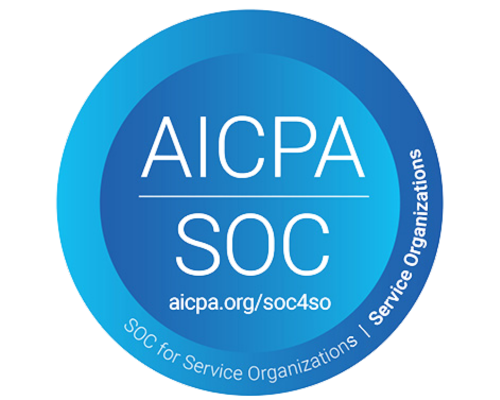Stay Compliant with I-9 Requirements During Emergencies: Develop a Disaster Recovery Plan

Introduction
Business disruptions caused by emergencies - such as natural disasters like the California wildfires, sudden regulatory shifts, system outages, cyberattacks, and hardware failures—pose significant challenges to compliance operations. For companies dependent on accurate and timely Form I-9 processing and workforce compliance, a well-structured disaster recovery plan (DRP) is not just a precaution but a necessity. This guide offers actionable strategies for developing a comprehensive DRP and explains how Clear I-9 can help maintain compliance during unforeseen events.
The Importance of Disaster Recovery for I-9 Compliance
Form I-9 compliance is not just a regulatory requirement; it’s a critical part of workforce management. Non-compliance can result in hefty fines and reputational damage. In 2024, the U.S. Department of Homeland Security (DHS) increased fines for I-9 paperwork violations to a maximum of $2,789 per form for paperwork violations, highlighting the financial stakes of maintaining compliance even during disruptions.
Disaster recovery planning helps businesses reduce risks associated with unforeseen events, not only mitigating financial penalties but also minimizing operational disruptions. A well-prepared plan ensures that critical compliance processes remain intact, even during crises, protecting both your bottom line and your operational continuity.
Disaster recovery planning ensures businesses can:
- Maintain Regulatory Compliance: Avoid penalties by adhering to deadlines and procedures, even during emergencies.
- Protect Sensitive Data: Safeguard employee information from breaches during system outages.
- Ensure Operational Continuity: Minimize downtime and quickly restore critical compliance processes.
Key Elements of a Disaster Recovery Plan
A well-structured DRP includes the following components:
- Risk Assessment and Business Impact Analysis
Identify potential risks such as natural disasters, cyberattacks, or sudden regulatory updates. Evaluate how these risks could impact your I-9 compliance processes. - Data Backup and Recovery
Implement secure, automated backups of I-9 records. Ensure backups are stored in multiple locations to prevent data loss. Cloud-based disaster recovery services ensure businesses can access and protect their data during unforeseen events, preserving operational continuity and customer trust when it matters most. Aberdeen discovered that cloud-based businesses could resolve disaster recovery issues in just 2.1 hours, as opposed to 8 hours for businesses that didn’t use cloud services. - Compliance Monitoring Tools
Leverage technology to monitor compliance status in real time. Automated alerts can help you stay ahead of potential violations during disruptions. - Emergency Response Team
Designate a team responsible for executing the DRP. This team should include HR professionals, IT specialists, and legal advisors. - Regular Testing and Updates
Regularly test your Disaster Recovery Plan (DRP) to identify gaps and ensure it remains up-to-date. Forrester reports that 50% of companies test their DRPs only once a year, leaving them exposed to potential risks. With constant IT changes, CIOs should aim to conduct tests two to three times annually. Performing tests in real-world scenarios, including coordination with your cloud service provider, helps assess the DRP’s reliability and allows for timely adjustments.
Adapting to Sudden Regulatory Changes
Regulatory landscapes can shift quickly, especially in workforce compliance. For example, the DHS’s introduction of new I-9 verification procedures in 2024 required businesses and compliant I-9 providers to adapt rapidly. Regulatory changes themselves can be a form of disruption, requiring businesses to stay agile and ready to implement new procedures without compromising compliance. To stay prepared:
- Stay Informed: Subscribe to compliance updates and alerts from trusted sources.
- Train Staff: Ensure employees understand new requirements and how to implement them.
- Partner with Experts: Work with compliance solutions providers who offer guidance and support.
How
Clear I-9:
Simplifies Disaster Recovery
Clear I-9 is your trusted partner in workforce compliance, offering innovative solutions to keep your business operational during emergencies. With our Live Video Verifications and automated compliance tools, you can:
- Seamlessly Transition to Remote Operations: Our virtual I-9 verification services ensure compliance continuity during system outages or office closures.
- Safeguard Employee Data: Rely on secure cloud storage and encryption to protect sensitive information.
- Access Expert Support:
Our team of compliance specialists is available to guide you through unexpected challenges.
Ready to Future-Proof Your Compliance?
Don’t let emergencies derail your compliance efforts. Partner with Clear I-9 to build a disaster recovery plan that keeps your workforce compliant and your business running smoothly. By working with us, you can prevent costly compliance mistakes during crises, ensure business continuity, and protect sensitive data from disruptions.
Schedule a demo today to learn how we can support your disaster recovery needs and safeguard your operations against unforeseen challenges.
Have Questions or Need More Information?
We will get back to you as soon as possible.
Please try again later.

HRlogics




